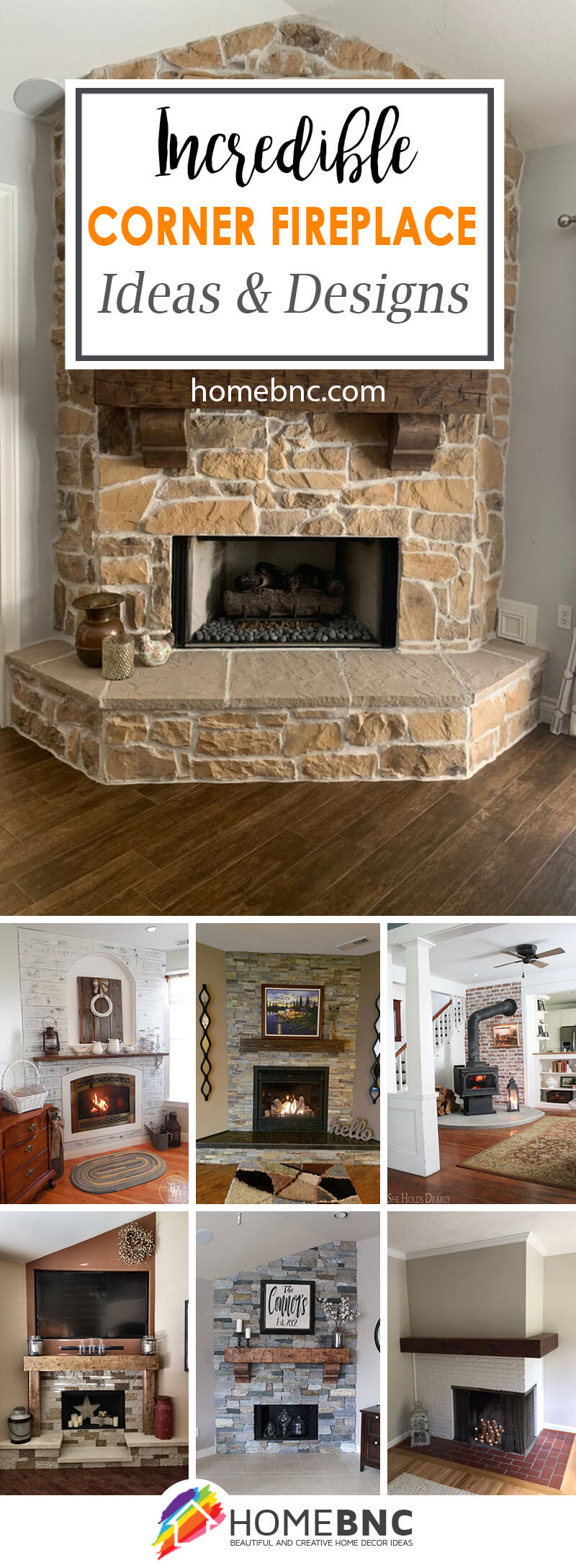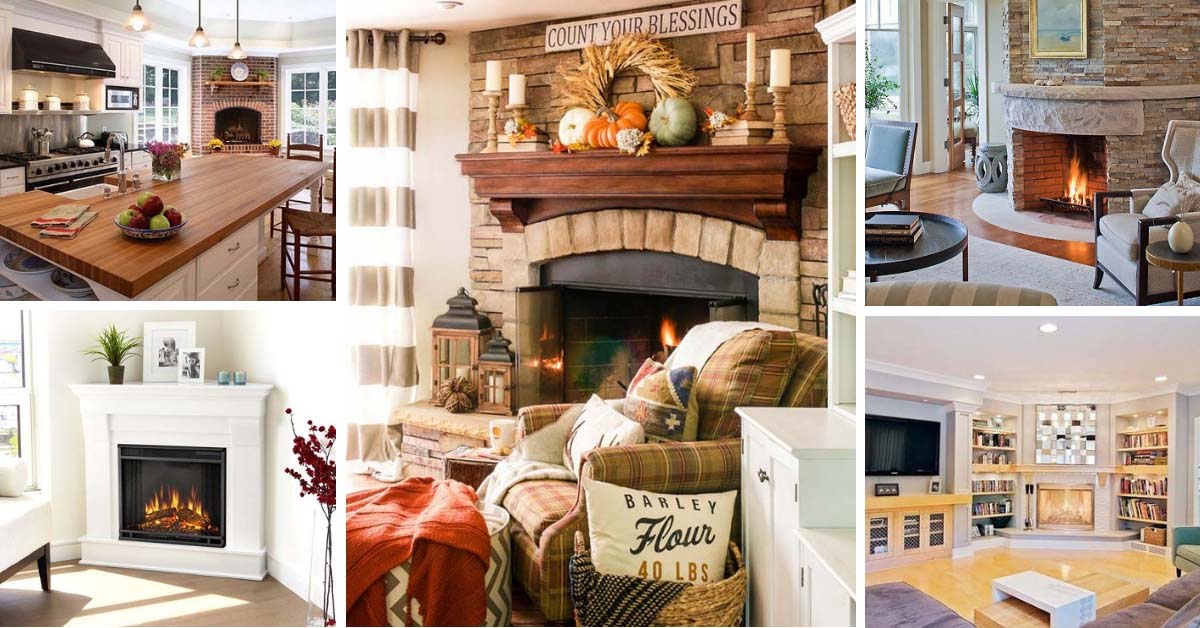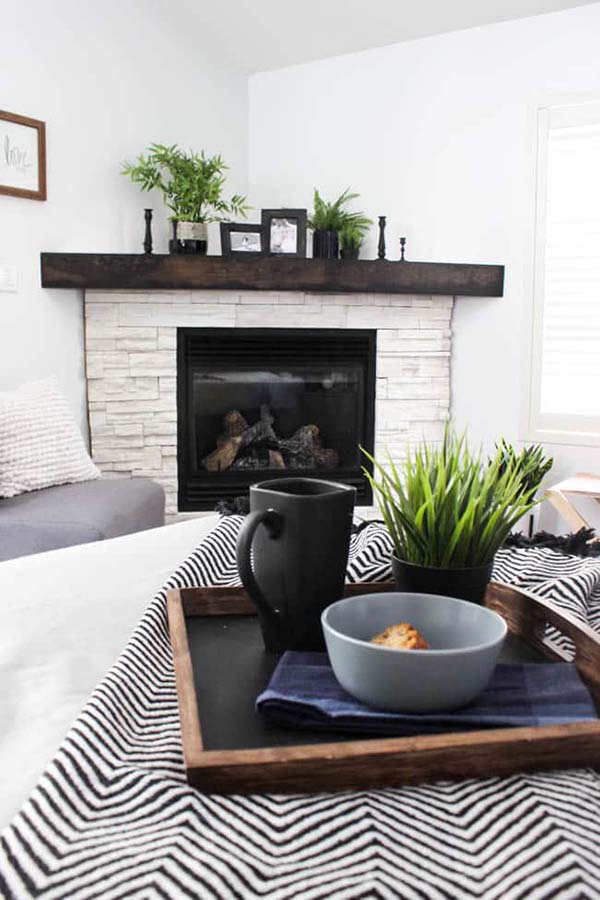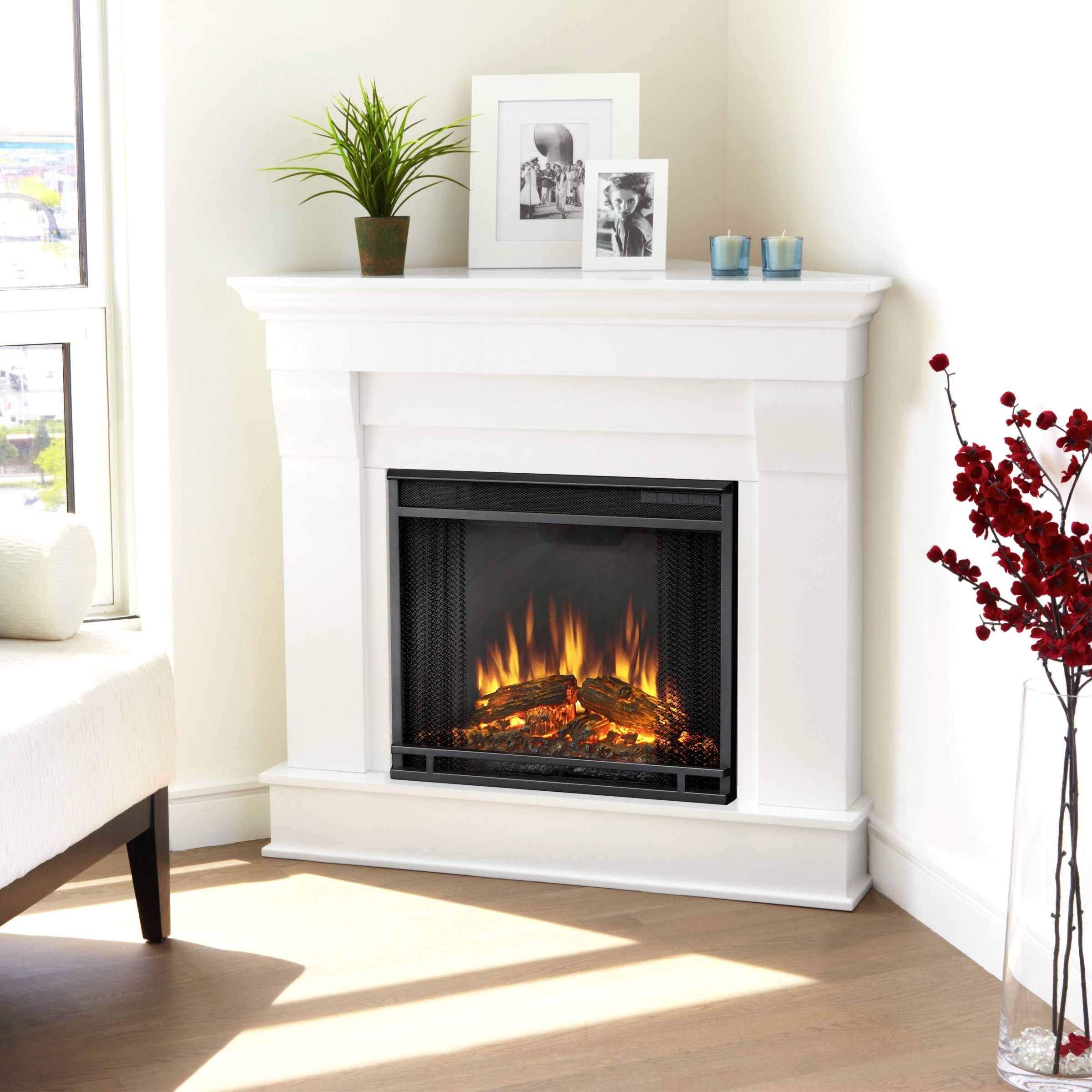A little corner fireplace is an efficient heating solution that maximizes space in small rooms. These angular hearths fit snugly where walls meet, creating comforting focal areas while saving valuable floor space. Whether dealing with an existing corner fireplace or designing a new one, careful design decisions can improve both function and elegance. Let’s discuss some major characteristics of small corner fireplaces, including space-saving designs and ornamental techniques that make the most of these distinctive architectural features.
Space-Efficient Corner Fireplace Designs
Corner fireplaces naturally save space by leveraging frequently ignored wall connections. Built-in units with triangular hearths fit best, resulting in clean lines that complement the room’s architecture. For a more substantial presence, try a diagonal fireplace that projects slightly into the room while remaining in the corner.
Compact prefabricated units are ideal for tiny spaces, with various electric and gas types built for corner installation. Wood-burning corner fireplaces require adequate chimney installation, which frequently necessitates inclined flues or unique venting systems. Measure the available area carefully, taking into account the required clearances from combustible materials.
Floating corner fireplaces make modern, airy statements by appearing to float above the floor. These functions especially well in contemporary settings where visual lightness is needed. For traditional settings, a corner inglenook with built-in seating makes good use of the angular space while also providing snug areas.
Material Options for Corner Fireplaces
Brick has a timeless appeal for corner fireplaces, and herringbone or diagonal patterns highlight the angular placement. Whitewashed brick maintains the area feeling open, whereas dark brick makes a striking contrast. Stone veneers add natural texture, with layered slate or fieldstone working particularly well in corners.
Metal surrounds complement modern corner fireplaces, with matte black steel and brushed nickel providing stylish alternatives to classic materials. Tiled corners allow for unique designs, with hexagonal or arabesque tiles adding visual appeal. Consider continuing the tiling up the adjacent walls to create a fireplace zone.
Prefabricated corner fireplace surrounds are available in a variety of textures, ranging from classic marble to contemporary concrete effects, making them an affordable option. These lightweight solutions can be readily installed over existing fireboxes or electric inserts. Combining materials, such as a stone firebox with a wood mantel, can provide depth in small corner installations.

Corner Fireplace Styles
Traditional corner fireplaces typically have simple wood mantels with brick or stone surrounds. Victorian versions could feature corner-specific tile patterns or decorative cast iron embellishments. Craftsman-style corner fireplaces often include natural materials, clean lines, and little decoration.
Modern renditions embrace geometric designs with minimal elaboration. Linear gas fireplaces or electric devices with slim profiles look well in modern corners. Some high-end designs include two-sided corner fireplaces that can be seen from adjacent rooms, but they take up more space and require more structural support.
Rustic corner fireplaces may have rough hewn stone or repurposed wood beams. Cottage types frequently have built-in bookcases or window seats flanking the corner hearth. Choose a style that compliments your room’s current architecture while meeting your functional requirements.
Heating Efficiency Considerations
Proper size ensures that a corner fireplace heats the intended space without wasting energy. Measure the room’s cubic footage and compare it to the fireplace’s BTU rating. Corner placements can necessitate a slightly higher output to compensate for heat loss in the angular layout.
Glass doors reduce drafts, which improves the efficiency of wood-burning corner fireplaces. Many current gas and electric corner units have thermostatic controls and zone heating capabilities. Consider using a heat circulating fan to spread warmth more evenly throughout the space.
Insulation behind corner fireplace walls reduces heat escape to the outdoors. If installed in an external corner, more wall insulation may be required. Direct vent gas fireplaces draw combustion air from the outside, which increases efficiency over standard vented fireplaces.
Decorating Around Corner Fireplaces
The corner fireplace should be the focal point of the room’s furniture layout. Angle seats towards the fireplace or float furniture to create conversation spaces. Avoid obstructing the hearth with bulky artifacts that impede visual flow in the small room.
Mirrors strategically placed on neighboring walls can increase both light and the illusion of space. A circular mirror over the corner fireplace softens the angles and reflects the flames. Keep decor proportional, using smaller-scale artwork and accessories that don’t overpower the small fireplace.
Built-in shelving flanking the corner fireplace gives exhibition space without taking up more floor space. Use these shelves to display books, collectibles, or seasonal decorations. Consistent style on both sides provides visual equilibrium in the angular layout.
Safety and Maintenance
Corner fireplaces necessitate careful attention to clearance distances, particularly where walls intersect. Most standards require a minimum of 36 inches of distance from flammable materials in all directions. Noncombustible materials, such as tile or metal, can help to reduce clearance requirements in compact places.
Annual inspections assure safe operation, especially in wood-burning corner units where creosote can collect unevenly in sloped flues. Gas and electric types require professional maintenance according to manufacturer specifications. Install carbon monoxide detectors nearby, regardless of fuel type.
Corner placement complicates various maintenance activities. Use long-handled brushes to remove ash and specialized corner cleaning tools for glass doors. Clear the area surrounding the hearth of any decorations that could be accidently knocked into the fire.
What sorts of fireplaces are best for narrow corners?
Electric fireplaces are frequently best suited to tight corners due to their compact size, ease of installation, and absence of venting restrictions. Many electric variants are triangular or curved in shape, making them ideal for corner placement. Direct vent gas fireplaces provide actual flames with high efficiency in slightly larger corners. Wood-burning corner fireplaces demand greater space for clearance and chimney access. Ethanol-burning fireplaces are another vent-free option, however with lower heat output. When deciding which type is best for your corner, keep your heating demands, available space, and installation limits in mind.
How do I arrange furniture around a corner fireplace?
Create a pleasant conversation area by arranging seating at an angle to the corner fireplace. Place the largest piece, such as a sofa, opposite the fireplace corner, with seats oriented towards it. Allow a minimum of 36 inches of space between furniture items. In rooms with corner fireplaces, floating furniture layouts are typically more effective than forcing everything against the walls. Use area rugs to delineate the seating group, but keep the fireplace as the visual anchor. Avoid placing tall furniture pieces right beside the fireplace, which may obstruct heat dispersion or visual access to the flames.
May I add a mantel to my corner fireplace?
Yes, corner fireplaces can incorporate mantels, but the design takes careful consideration. A triangular corner mantel that follows the angles of the fireplace gives the appearance of being built in. A floating shelf hung diagonally across the corner is a more modern alternative. A wooden mantel can be specially cut to fit the corner in classic styles, with returns on either side. Ensure that any mantel has a correct clearance from the firebox opening, which is normally at least 12 inches for wood burning systems. Prefabricated corner mantel kits are available for many fireplace models, making installation easier.
What is the clearance requirement for corner fireplaces?
Clearance requirements vary according to fireplace type and local codes. Most wood-burning corner fireplaces require a minimum 36-inch distance from flammable items in all directions. Gas fireplaces typically require less space, sometimes as little as 12 inches to side walls and 36 inches to furniture. Electric equipment may require only a few inches of space. Always refer to your model’s installation instructions for exact measurements. Corner placements may require more space on the diagonal where walls meet. When built properly around the fireplace entrance, noncombustible materials such as tile or stone can reduce the amount of clearance necessary.
How do I make my corner fireplace appear more substantial?
Extending the surround materials up adjacent walls adds visual weight. Install floor-to-ceiling stone or tile on both walls that form the corner. Built-in bookcases or cabinets flanking the fireplace give both visual appeal and storage space. A dramatic mantel shelf with returns on both walls highlights the corner placement. Painting the wall space surrounding the fireplace a darker color than the rest of the room helps it stand out. Adding sconces or picture lights above directs attention upward and makes the feature appear bigger. Mirrors strategically placed on nearby walls reflect and enhance the fireplace’s presence.
Are corner fireplaces less efficient than wall-mounted models?
Corner fireplaces can be equally effective when correctly sized and fitted. Their angle positioning may increase heat dispersion in some rooms by emitting warmth in two directions. However, if corner installations in external walls are not well insulated, they may lose somewhat more heat outdoors. Modern direct vent gas and electric corner units have efficiency ratings similar to wall-mounted ones. Wood-burning corner fireplaces necessitate careful flue construction to maintain proper draft, as the tilted chimney channel can occasionally compromise performance. Choosing the right size unit for your space and following manufacturer installation instructions provides maximum efficiency regardless of placement.
Corner Fireplace Ideas – Decor Home Ideas
Corner Fireplace Designs – Angled Interior Ideas
Corner Ventless Gas Fireplace – Ideas on Foter
Best Corner Fireplace Ideas
Outstanding Small Corner Fireplace Electric Snapshot Ideas
Related Posts:











